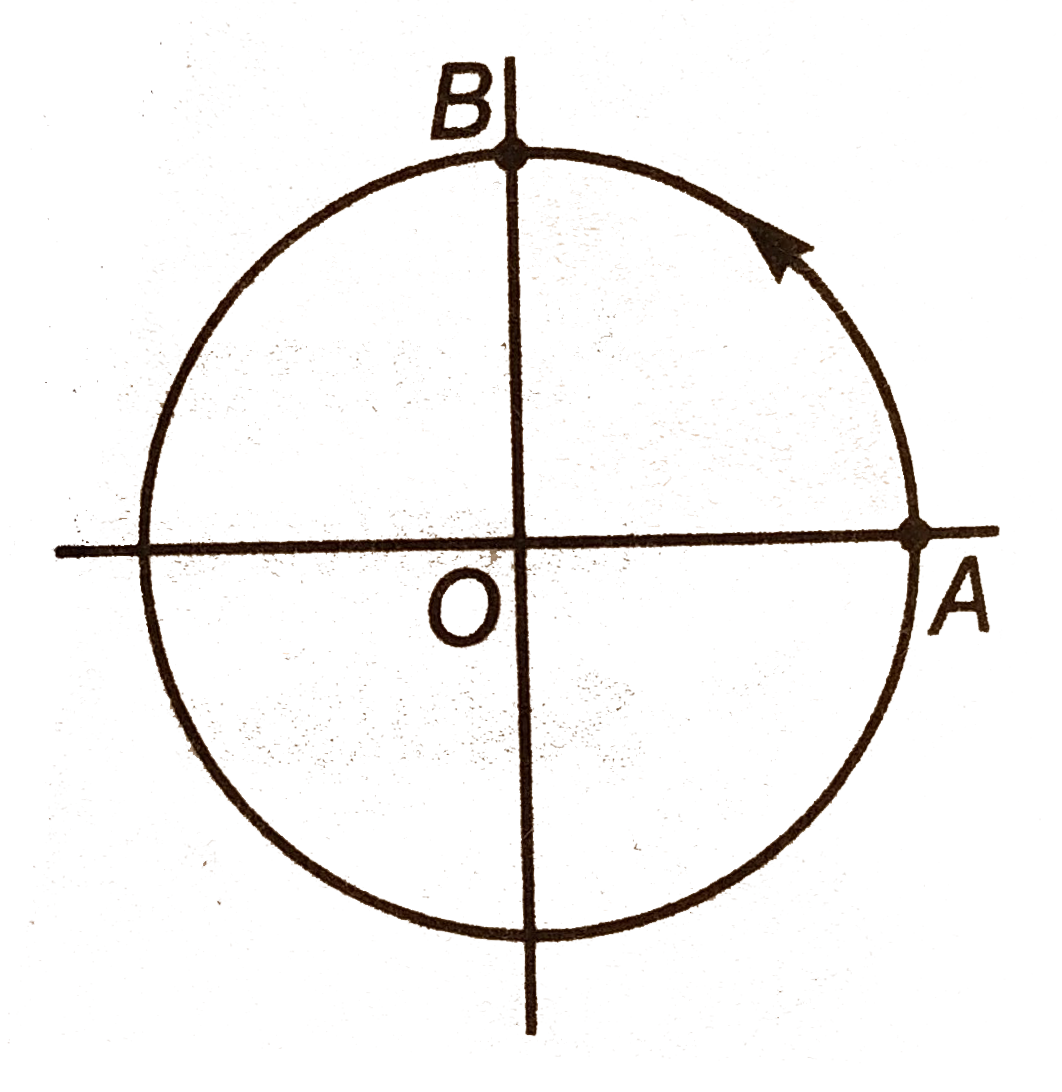Assertion: An object can have constant speed but variable velocity.
Reason: Speed is a scalar but velocity is a vector quantity.
If both assertion & Reason are True & the Reason is a corrrect explanation of the Asserion.
If both Assertion & Reason are True but Reason is not correct explanation of the Assertion.
If Assertion is Trie but the Reason is False.
If both Assertion & Reason are false
The correct Answer is:A
To solve the question, we need to analyze the assertion and the reason provided.
Step 1: Understand the Assertion
The assertion states that "An object can have constant speed but variable velocity."
- Constant Speed: This means that the object is covering equal distances in equal intervals of time.
- Variable Velocity: This means that the object's direction of motion is changing, even if the speed remains the same.
Step 2: Understand the Reason
The reason states that "Speed is a scalar but velocity is a vector quantity."
- Speed: A scalar quantity that only has magnitude (how fast an object is moving).
- Velocity: A vector quantity that has both magnitude and direction (how fast and in which direction an object is moving).
Step 3: Analyze the Relationship
Now, we need to see if the assertion is true and if the reason correctly explains it.
1. Assertion Analysis:
- An object can move in a circular path at a constant speed (e.g., a car moving around a circular track at a constant speed). Here, the speed remains constant, but the direction changes continuously, leading to a change in velocity.
- Therefore, the assertion is true.
2. Reason Analysis:
- The reason correctly states that speed is a scalar and velocity is a vector. This distinction is crucial because it explains why an object can have constant speed while its velocity changes due to a change in direction.
- Therefore, the reason is also true.
Step 4: Conclusion
Since both the assertion and the reason are true, and the reason correctly explains the assertion, we conclude that the correct option is:
Both assertion and reason are true, and the reason is a correct explanation of the assertion.
The assertion states that "An object can have constant speed but variable velocity."
- Variable Velocity: This means that the object's direction of motion is changing, even if the speed remains the same.
The reason states that "Speed is a scalar but velocity is a vector quantity."
- Velocity: A vector quantity that has both magnitude and direction (how fast and in which direction an object is moving).
Now, we need to see if the assertion is true and if the reason correctly explains it.
- An object can move in a circular path at a constant speed (e.g., a car moving around a circular track at a constant speed). Here, the speed remains constant, but the direction changes continuously, leading to a change in velocity.
- Therefore, the assertion is true.
- The reason correctly states that speed is a scalar and velocity is a vector. This distinction is crucial because it explains why an object can have constant speed while its velocity changes due to a change in direction.
- Therefore, the reason is also true.
Since both the assertion and the reason are true, and the reason correctly explains the assertion, we conclude that the correct option is:
Topper's Solved these Questions
- MOTION IN A PALNEBOOK - ALLENCHAPTER - MOTION IN A PALNEEXERCISE - SOLVED EXAMPLE
28 Videos
- MOTION IN A PALNEBOOK - ALLENCHAPTER - MOTION IN A PALNEEXERCISE - EXERCISE-2
170 Videos
- KINEMATICS-2DBOOK - ALLENCHAPTER - KINEMATICS-2DEXERCISE - Exercise (O-2)
46 Videos
- NEWTON'S LAWS OF MOTION & FRICTIONBOOK - ALLENCHAPTER - NEWTON'S LAWS OF MOTION & FRICTIONEXERCISE - EXERCISE (JA)
4 Videos
Similar Questions
Assertion : An object may have varying speed without having varying velocity.
Reason : If the velocity is zero at an instant, the acceleration may not be zero at that instant.
View SolutionGive an example of motion of a body moving with a constant speed, but with a variable velocity. Draw a diagram to represent such a motion.
View Solution
Knowledge Check
Assertion : An object may fall with a constant velocity.
Reason : This happens when acceleration of the object is equal to acceleration due to gravity.ABoth assertion and reason are true and reason is the correct explanation of assertion.BBoth assertion and reason are true but reason is not the correct explanations of assertion.CAssertion is true but reason is false.DBoth assertion and reason is false
A : Magnitude of mean velocity of the gas molecules is same as their mean speed.
R : The only difference between mean velocity and mean speed is that mean velocity is a vector and mean speed is a scalar.
View SolutionAssertion : Hydrostatic pressure is a vector quantity.
Reason : Pressure is force divided by area, and force is a vector quantity.
View SolutionSpeed and velocity
View SolutionAssertion: A particle is rorating in a circle with constant speed as shown. Between point A and B , ratio of average acceleration and average velocity is angular velocity of particle about point O .
Reason: Since speed is constant, angular velocity is also constant.

View SolutionAssertion: A frame moving in a circle with constant speed can never be an inertial frame.
Reason: It has a constant acceleration.
View SolutionAssertion : Due to two point charges electric field and electric potential can't be zero at some point simultaneously.
Reason : Field is a vector quantity and potential a scalar quantity.
View SolutionAssertion: Pressure is a vector quantity.
Reason: Pressure P=FA. Here F, the force is a vector quantity.
View Solution
